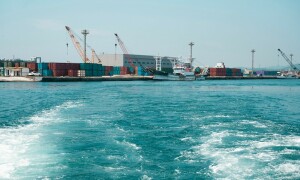 With the remittance level above the $1 billion mark in October, the countrys policymakers must have breathed a sigh of relief. A sudden and significant drop in workers inflows to the country in September, after witnessing high inflows for about six straight months, was enough cause of concern for the authorities. The workers repatriation totalled $1,018 million in October, up 14 percent compared to September and close to the past three months average of $1099 million. This brought the total workers inflows to $4,315 million during the first four months of FY12, marking a year-on-year growth of 23 percent. Among the four major remittance-contributing countries - the US, the UK, Saudi Arabia and the UAE, - inflows from Saudi Arabia lead the way with an increase of 50 percent, year-on-year, during the first four months of FY12. Moreover, barring a few countries situated in Europe, which fortunately are smaller contributors, the country saw a growth in inflows from all destinations. There are two good reasons for the optimism. First, skilled labor continues to seek employment abroad to fund their family expenditures at home. Second, looming economic and policy uncertainty across the world might have been compelling overseas employees and businessmen to send their saving to the home country. An IMF working paper published in the latter half this year, Remittances in Pakistan-why have they gone up, and why aren they coming down? links growth in remittances to an increase in workers migration and higher skill level of migrating workers. Many economists assert that a high level of remittance has some eyebrow raising elements, by relating it to factors such as whitening of black money. Some challengers oppose this assertion by highlighting the fact that the size of remittances is small and there is a tough regulatory regime on transfer of funds through illegal channels in many remittance-sending countries, especially in Saudi Arabia, which accounts for 27 percent of total inflows during the first four months of FY12. Theres a lot to be said for receiving hefty foreign currency sent by overseas Pakistanis, when other inflow channels are drying out. Policymakers need to think straight and devise more robust strategies to induce remittance flow through formal channels.
With the remittance level above the $1 billion mark in October, the countrys policymakers must have breathed a sigh of relief. A sudden and significant drop in workers inflows to the country in September, after witnessing high inflows for about six straight months, was enough cause of concern for the authorities. The workers repatriation totalled $1,018 million in October, up 14 percent compared to September and close to the past three months average of $1099 million. This brought the total workers inflows to $4,315 million during the first four months of FY12, marking a year-on-year growth of 23 percent. Among the four major remittance-contributing countries - the US, the UK, Saudi Arabia and the UAE, - inflows from Saudi Arabia lead the way with an increase of 50 percent, year-on-year, during the first four months of FY12. Moreover, barring a few countries situated in Europe, which fortunately are smaller contributors, the country saw a growth in inflows from all destinations. There are two good reasons for the optimism. First, skilled labor continues to seek employment abroad to fund their family expenditures at home. Second, looming economic and policy uncertainty across the world might have been compelling overseas employees and businessmen to send their saving to the home country. An IMF working paper published in the latter half this year, Remittances in Pakistan-why have they gone up, and why aren they coming down? links growth in remittances to an increase in workers migration and higher skill level of migrating workers. Many economists assert that a high level of remittance has some eyebrow raising elements, by relating it to factors such as whitening of black money. Some challengers oppose this assertion by highlighting the fact that the size of remittances is small and there is a tough regulatory regime on transfer of funds through illegal channels in many remittance-sending countries, especially in Saudi Arabia, which accounts for 27 percent of total inflows during the first four months of FY12. Theres a lot to be said for receiving hefty foreign currency sent by overseas Pakistanis, when other inflow channels are drying out. Policymakers need to think straight and devise more robust strategies to induce remittance flow through formal channels.
BR100
12,702
Increased By
113.8 (0.9%)
BR30
38,258
Increased By
378.2 (1%)
KSE100
118,383
Increased By
1067.8 (0.91%)
KSE30
36,395
Increased By
278.8 (0.77%)






















Comments
Comments are closed.